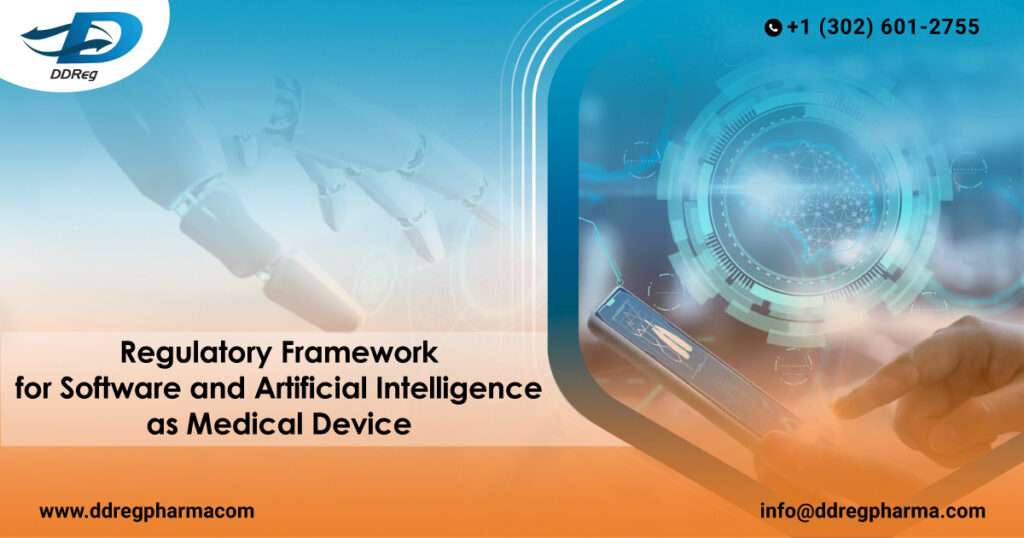The convergence of healthcare with technology has led to giant innovations, one of the most significant being the use of software and artificial intelligence (AI) as medical devices. Such developments have been called Software as a Medical Device (SaMD) by many and have wide applicability in transforming the diagnosis, treatment, and care of patients medically.
SaMD means Software as a Medical Device, without being part of the hardware, but specifically intended to be used for medical purposes. SaMD includes apps that run on general-purpose computing platforms—for example, smartphones, tablets, and personal computers. The most unique thing about SaMD is that it possesses the capability to perform complex calculations, make informed decisions, and deliver precise outcomes based on large datasets, which are often impractical for human operators to handle in a timely manner.
Applications of SaMD
- Diagnostics: One of the most promising applications of SaMD is in diagnostics. The AI algorithms could analyze any sort of medical image for patterns and abnormalities that might suggest a certain kind of disease, such as cancer. For example, it can benefit radiologists in bringing notice to the region of interest, thereby further decreasing the chances of human errors with increased diagnostic correctness.
- Monitoring and Alerts: SaMDs monitor continuously the data of patients’ health and timely inform the healthcare provider of any significant change. For example, wearable devices with SaMD can measure signs such as heart rate, blood pressure, or glucose in patients, and the data are available in real time, which can be very crucial for chronically ill patients.
- Treatment Planning: AI-powered software could help doctors design personalized treatment programs based on an individual patient’s specific medical history and genetic information and their current state of health. This can help get better treatment results and will cut down on adverse reactions.
- Patient Management: SaMD applications can provide better ways of managing the patient via telemedicine platforms that facilitate remote consultations and follow-ups. It comes with potential benefit to the patients located in remote areas or not able to be on the move due to mobility issues.
Regulatory Landscape of SaMD
The regulatory landscape of SaMD is also very complicated and varies with regions. In the European Union, the guidelines for classification, certification, and post-market surveillance of SaMD are laid down in the Medical Device Regulation (MDR). In the USA, regulatory requirements for medical devices are also prescribed in detail by the Food and Drug Administration, with a specific regulatory structure for software-based solutions. SaMD is regulated according to the perceived risk to patients by major national and international regulatory bodies. The safety and effectiveness of a high-risk application that forms a part of a critical diagnostic or treatment decision go through a high degree of review. The process includes clinical trials and the validation of the software along with continuous post-market monitoring.
Challenges and Considerations of SaMD
Data Privacy and Security: Being highly sensitive to health data, privacy and security of the data are prime concerns since SaMD generally involves. Developers need to deploy high security to protect the data of patients from a breach in security and unauthorized access.
Interoperability: SaMD solutions need to be interoperable with other health systems and devices for them to function effectively. Ensuring interoperability is a difficult thing to manage since medical devices and electronic health record systems are heterogeneous.
Validation and Testing: AI algorithms in SaMD must be validated through testing for their truth and trustworthiness. The validation stage must begin at the development level and extend to lifelong surveillance for the maintenance of performance criteria.
User Training: The utilization of SaMD application should be useful and economic for the healthcare provider, which can only be achieved by training. This includes an understanding of how to interpret the data output by the software and how to fit it into clinical workflows.
Future Prospects of Software as a Medical Device
The future of SaMD is bright what with constant advancements in AI and machine learning pushing the envelope. Some of the new trends are:
Predictive Analytics: These are AI algorithms that predict the onset of an outbreak of disease, or the deterioration of a patient based on historical data and current trends, or the possible outcome of treatment.
Natural Language Processing (NLP): This is intended to enhance interactions between the patient and the doctors by helping to process and understand human language, for improved documentation of electronic health records, and more natural communication.
Augmented Reality (AR): Assists surgeons in complex procedures with real-time guidance and enhances precision through overlaying digital information over the physical world.
Conclusion
Medical software and AI as medical devices are changing the landscape of health care like never before. They bring opportunities that can never be imagined to the improvement of patient outcomes, diagnostic accuracy, and treatment planning. As technology continues to advance in capability so too, will SaMD as being an essential part of modern medicine. It would be crucial to lead this through the regulation minefield, secure the data, and achieve interoperability to fully realize these creative solutions.
DDReg offers end-to-end regulatory services in the USA and Europe for pharmaceuticals. The subject matter expertise, industry knowledge, and presence in the USA and Europe e seamless regulatory submissions and post-marketing safety surveillance. Read more from DDReg’s experts here: A Collaborative Approach Towards Integrating Artificial Intelligence in Medical Products
Reference

